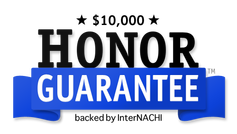|
Spring Lawn Care Checklist:
Take It Easy on the Soil Don't be in a hurry to start working in your yard. Let the soil thaw and dry out before beginning your spring lawn care chores. Foot traffic on wet soils will cause soil compaction problems. Even worse damage is caused by walking on lawns where the soil has thawed on top and is still frozen underneath, shearing roots in the frozen soil from the grass plants on top. If you get too aggressive with raking, mowing or aerating - any activity that will open up the turf grass canopy exposing it to sunlight - you risk damaging fragile new growth and giving early germinating weeds the jump on your lawn grass. Wait until your grass is actively growing. Sharpen Your Lawn Mower Blades Early spring is a good time to give your lawnmower and other power tools a tune up. Sharpen your lawn mower blades, change the oil, spark plug, and filters. Mow Low to Remove the Dead Tops Once your lawn starts to green up, give it a good short cut to remove the dead grass tops. This will give the newly emerging leaves the sunlight they need and get them growing. Take care not to cut it too short - scalping and damaging the crowns of the plants. If you are a 'grass cycler' it's OK to collect the clippings and excess debris this first mow of the year. Core Aeration Aerating benefits your lawn in several ways: reduces soil compaction, controls thatch, stimulates new root growth and improves water, air and nutrient filtration. Fall is the best time to aerate cool-season grasses and warm-season grasses should be aerated in the summer - when they are actively growing. If you missed out on aerating your cool-season lawn last fall, spring is the second-best time to get this done. Just be sure you aerate before you apply a crabgrass preventer. A good time to top dress with compost is right after you aerate, all soils benefit from adding organic matter. Thatch Control - Aerating will help control thatch and is less damaging to grass plants than power raking. If your thatch layer is over 1/2" deep, you'll want to consider dethatching with a power rake. Again, wait to power rake until your grass is actively growing and wait to apply crabgrass preventer until after you rake. Overseed Bare Areas Fall is the best time to seed cool-season grasses. However, there is a short 'window of opportunity' you can take advantage of in the spring... Grass seed will start to germinate when soil temperatures reach 50° F. Get your seeding done early enough so the new grass plants have time to develop strong roots before the summer stress period. Over seeding works best when combined with aerating. Seeds will find their way into the aeration holes where they are protected, make good contact with the soil, and germinate quickly. Skip the crabgrass control if you Overseed because it also works on grass seed. Plant warm-season grasses after the danger of frost has passed - late spring into early summer. Crabgrass Control Crabgrass prevention is a very important spring lawn care chore. Spring is the time to prevent crabgrass. If your lawn is dense and vigorous, consider taking chemical weed controls off your spring lawn care list. A dense and vigorous lawn will not allow weeds to invade...its the best weed control. Crabgrass is a prolific seeder. If you had crabgrass last year, expect to see it again this year and consider using a pre-emergence herbicide. These crabgrass preventers stop weed seeds from germinating, so you will want to apply them before seeds germinate to get the best control. This will be when soil temperatures reach 50° F. Many gardeners plan to apply their pre-emergence around Easter. Blooming forsythia is another good indicator - when you see the yellow blooms, the soil temperature is 50° F. Don't worry if you are late applying pre-emergence - crabgrass and other weed seeds are germinating all season long and you'll still get some control...better late than never. Pre-emergence herbicides will control a broad spectrum of weeds along with crabgrass and many products will give you three to six months’ control. When Should You Fertilize and How Much? Go easy on the fertilizer in the spring. Too much will cause a flush of growth at the expense of the roots. Cool-season grasses - including Kentucky bluegrass, fescues and ryegrass - should receive the majority of their annual fertilizer in the fall, that's when they will benefit the most. Lawns that were fertilized in the fall will green up early and won't need to be fertilized until late spring. A light spring application - around Memorial Day - will keep them healthy and give them a nice green color boost. The amount of fertilizer that you apply in late spring should be less than 1/2 lb. Nitrogen/1000 ft2. If you missed your fall fertilizer, make it up with a couple light applications. Wait until the grass is actively growing (around mid-April) and then apply 1/4 to 1/2 lb. nitrogen/1000ft2. Make another light application six weeks later (Memorial Day). Warm-season grasses benefit from summer fertilizer applications, that is when they are actively growing. Wait to fertilize Bermudagrass, zoysia, St. Augustine, and other warm-season grasses until they green up. At least 75% of the lawn should be green. Fertilizing too early in the spring can cause a flush of growth that can damage the plants if there is a late heavy frost. Wait to Water The last item on your spring lawn care list should be watering. It's tempting to start watering in early spring, but there is usually plenty of rain to keep your lawn healthy. Wait to water until the weather gets warm and dry. It's ok to let the grass show signs of drought stress - this will actually cause to roots to grow deep searching for water. Waiting until the weather turns hot and dry encourages deep rooting and that will prepare your lawn for the dog days of summer. Trinuck Properties Inc. Residential Home Inspections Trust Trinuck Proudly serving Edmonton and surrounding areas www.trinuckproperties.com 780-499-2739 trinuck@gmail.com Most people believe that only the homebuyer should obtain a home inspection when buying a home. I believe that the seller can gain from a pre-listing inspection of their home as it may reduce if not eliminate conditional offers. If you are in the process of listing your home, consider calling Trinuck Properties for a pre-listing home inspection.
The pre-listing inspection is usually done before a home is listed on the market. This allows potential buyers to review the condition of the home prior to negotiations. If we find any concerns through the home inspection, you may address these matters and have the issues repaired prior to selling, thus acting in good faith with nothing to hide. Talk to your real estate professional about having us there as I would be willing to attend an open house on your behalf to talk to prospective buyers about the condition of your home. Thank you. Darren Gafiuk Trinuck Properties Inc. www.trinuckproperties.com 780-499-2739 TRUST TRINUCK Most builders offer a one-year warranty on a new home. We will come out during the 11th month and perform a full home inspection before the builders warranty expires.
Our non-invasive inspection is based on observations of the visible and apparent condition of the interior and exterior of the structure, including its major systems and components. Following your inspection, you will receive a comprehensive report that includes information on any material defects observed on the date of the inspection. Armed with this information, you can take any necessary steps to hold your builder and his subcontractors to their warranties while they are still in force. A warranty inspection is a comprehensive evaluation of the interior and exterior of your new home and its major systems and components. It is conducted during the 11th month of your occupancy-before your builders warranty expires. We follow InterNACHI comprehensive Standards of Practice. This means that we will inspect all of the following [if accessible]: 1-interior & exterior walls, windows & doors 2-HVAC 3-Basement/Crawl space 4-Fireplace 5-Roof & Attic 6-Electrical 7-Plumbing www.trinuckproperties.com trinuck@gmail.com 780-499-2739 Here are my all-time favorite top ten tips to help you prepare your home for winter:
Darren Gafiuk, Certified Professional Home Inspector, Trinuck Properties Inc. 1) Furnace Inspection
5) Service Weather-Specific Equipment
Your Friendly Neighborhood Home Inspector 780-499-2739 TRUST TRINUCK Trinuck Properties Inc. is proudly serving Edmonton and the surrounding areas providing home inspection, air quality test, as well as ozone shock treatment.
I take pride in performing each and every home inspection and I will put my dedication and education to work for you. The home purchasing process can be a stressful time, and i will ensure that you will be looked after with the utmost respect and care. I provide a timely, detailed and informative report that you can trust. Along with each of my home inspection, I also provide a Home Maintenance book to help you care for your home. We are the only company in Edmonton that provides this book as compliments for using our home inspection service. I am dedicated, professionally trained, bonded and insured. Call me first before you purchase your new home. Thank you. Darren Gafiuk Trinuck Properties Inc. www.trinuckproperties.com 780-499-2739 TRUST TRINUCK |
AuthorDarren Gafiuk Archives
December 2018
Categories
All
|
Open 7 Days a WeekNo Additional Fee for evening or weekend appointments.
Phone: 1-780-499-2739
|
Services |
Member of:Our GuaranteeProud Supporter of: |
© COPYRIGHT 2022. ALL RIGHTS RESERVED.






 RSS Feed
RSS Feed






